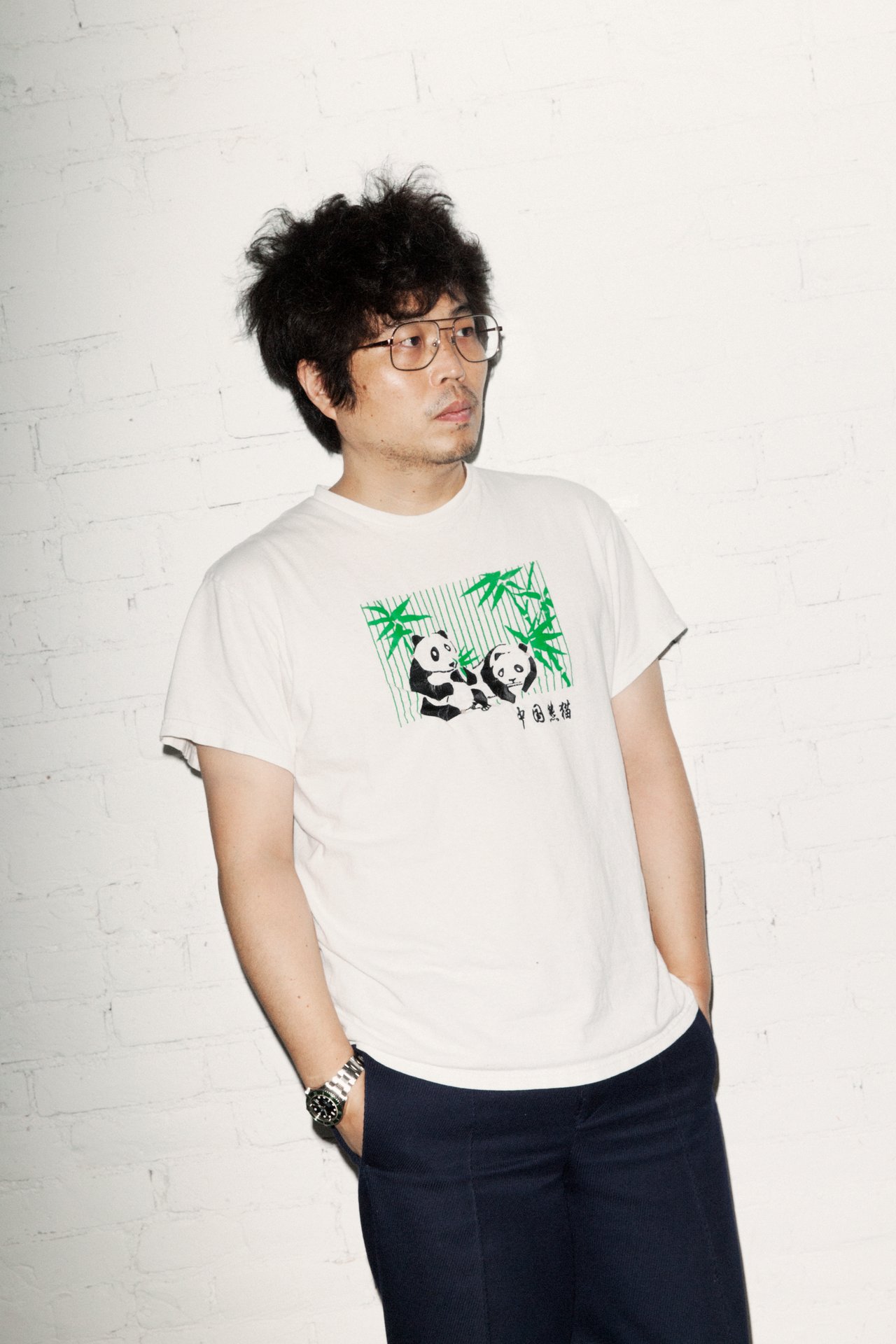Rebuilding a More Sustainable Fashion Industry After COVID-19
May 27, 2020
Sacha Brown


The Sustainable Apparel Coalition (SAC) published a report on Weaving a Better Future, which examines rebuilding a more sustainable fashion industry after COVID-19. Amina Razvi, SAC Executive Director, answers questions on how the societal and economic challenges that have unfolded demand that companies accelerate their progress on sustainable initiatives in order to be competitive in the market that will emerge after the pandemic.
Why/how are sustainability programs within fashion companies being impacted at this time?
It varies a lot by company. I’ve seen brands and retailers that have had to de-prioritize sustainability right now to simply get through this incredibly challenging time, and I’ve seen others use this as an opportunity to double down on sustainability efforts because they’re in a position to do so. What we need to focus on is what comes next and how we rebuild the industry together.
This crisis has brought to light more starkly than before some of the systemic problems within the industry and revealed just how fragile this whole system is. And because of that, I believe that sustainability both from a social and environmental perspective will become more pressing as we won’t be able to go back to the way things were.
We’re seeing that companies with sustainability embedded holistically throughout their operations are already faring better than those that siloed sustainable efforts or never started on the journey.
To survive the pandemic and maintain strong business relationships, companies need to lead with values of sustainability and compassion for the health, safety, and well-being of workers around the world, especially those most vulnerable. They will emerge stronger from this crisis than companies that do not prioritize sustainability.
What are the consequences of order cancellations in developing countries?
This crisis and the resulting societal and economic shutdowns have had an immense impact on the apparel, footwear, and textile industries. Cancellation of orders from brands is having a devastating impact on the manufacturers who rely on the fulfillment of those financial commitments to keep businesses operating. However, like so many issues we’re seeing as a consequence of COVID-19, order cancellations are not a black and white issue.
A radical drop in consumer spending and continued closures has led to massive overstock and inventory, putting apparel, footwear, textile companies under pressure and distress. Many organizations had to take drastic measures to survive the crisis. They implemented measures often aimed at protecting the business, such as preserving cash, cutting costs, furloughing people or pushing sales online. These decisions have ripple effects on the value chain, pushing an already precarious group of workers to greater economic vulnerability. The growth of textile and garment manufacturing sectors is historically a fundamental early step in the economic maturation of developing countries, and the closure of textile factories could have devastating long-term consequences for the overall economic stability and growth of these countries.
However, what happens when a company decides to follow through on orders to “do the right thing,” only to find out that it’s putting more lives at risk by having workers come in when they are sick? These decisions aren’t simple and some have unintended consequences that need to be considered as well.
The most important thing we should do right now is have open conversations between companies and suppliers to find solutions together. Now more than ever, companies need to partner with one another and lean on their values of trust and strong business relationships and prioritize the health, safety, and financial well-being of workers around the world. The ways companies respond now will define how they are remembered by consumers and business partners long after the crisis ends.
What solution based discussions can brands have with their supply chain partners to minimize order cancellations?
COVID-19 has put a big spotlight on many of the challenges in our industry, and there’s not a one-size-fits-all approach to solving them. For starters, this crisis has further highlighted the need for greater partnership and dialogue between companies and suppliers. It’s so important to maintain trusting relationships at this time. Brands should talk to suppliers and have an open dialogue about short term and long term plans and how they can come up with solutions that are mutually beneficial.
Industry partners may need to have very honest and difficult conversations about each organization’s situation, but by doing this, they can strengthen their relationships and find solutions on how to collaborate in the short, medium, and long term. In order to rebuild trust, we need to support them as best we can through financial support and encouraging a safe re-opening strategy, prioritizing, and protecting worker health and safety. We need to work together and demonstrate our values through the decisions we make, how we communicate and collaborate with our partners – and the stakes have never been higher.
How has consumer spending changed because of COVID-19?
Consumer spending has dropped radically and paired with the temporary closure of retail businesses the impact on sales was immense. In April and May, clothing sales in the U.S. declined 89 percent. Society has changed as a result of this crisis. Millions of people have lost their jobs and it’s an uncertain time.
Beyond the ways in which we work and live, COVID-19 has changed the things we value. Before the crisis, nine out of 10 Generation Z consumers already believed companies have a responsibility to address environmental and social issues. I predict that the demand from consumers toward more sustainable products and transparency will increase, as well as the desire to purchase fewer high-quality garments that are made to last.
What brand values are consumers prioritizing during this time?
As consumers spend less money but more consciously, their expectations for sustainability, fair working conditions, and ethical supply chains are growing. We’re already seeing consumers responding positively when brands demonstrate social responsibility, as they give back to communities in need, and prioritize environmental sustainability.
After the pandemic, we expect that high-quality products and durability will become more important for consumers, given expected economic uncertainty and high levels of unemployment. Sustainability will be viewed as key product priority by all stakeholders and will include both environmental and ethical commitments made by brands. They’re reporting that they very favorably view brands that are paying their furloughed employees, repurposing facilities to produce PPE, and those that are donating to their local communities. They want to support companies that are doing the right thing. We have a very captive audience with this generation. They’re paying attention, and they’re voting with their wallets.
How should companies think about approaching their sustainability initiatives coming out of COVID-19?
Companies should think about recovery in short, medium, and long-term phases. As part of their immediate response, apparel, footwear, and textile companies have reacted by focusing on protecting their finances and the safety of their workers, both in facilities and corporate offices.
In the mid-term, as companies adjust to a cautious reopening or rebound of business, they should continue to put health and safety first. Marketing and communications teams will need to focus on consumer trust – sustaining or rebuilding, depending on their circumstances coming out of the crisis.
Brands will need to optimize the entire consumer engagement and journey highlighting responsibility and ethical behavior in their communications, adjusting the store experience, and catering to a greater desire for transparency, purpose, and personalized interactions.
Many brands are clarifying or revising their positions on purchasing or cancellation decisions, which were made during the outset of the pandemic. These brands have been positively recognized by their suppliers and stakeholders for their corrections — they’re taking important steps towards rebuilding trust in the value chain. Exemplary brands will also review and further adjust their commitments to sustainability and will also provide significantly more transparency.
In the long-term, new norms will be established across the value chain, defined by better partnerships, rebuilt trust, and deeper collaboration. The experience of a global pandemic will create awareness of supply chain fragility. Leaders will build flexible supply chains that are less dependent on a single geographic region. This offers a chance for more consistent collaboration across the value chain, and a focus on deeper partnerships between brands and manufacturers.
What actions can zero-waste brands take to mitigate the concerns with overstock from this past season?
As operations stabilize into some form of ‘new normal,’ and customers begin to re-engage, questions of excess inventory and commitment to previously stated goals such as zero waste will eventually be raised by customers, activists, or other stakeholders.
Companies will need to proactively get ahead of the next looming issue by finding ways to manage their current stock, create space as stores reopen, and manage upcoming seasons. This will be an opportunity to work closely with key supply chain partners and other global organizations, such as the Global Fashion Agenda, that are working with innovators and solution providers to address these challenges. They can reuse and recycle materials they already have. They can also rethink how upcoming seasons may be managed and postpone some stock in following seasons. Companies have an opportunity to find innovative and collaborative solutions to make use of raw materials they’ve already procured.
For many companies, why will collaboration be key in maintaining sustainability programs?
No single company can address sustainability alone. Over the past 10 years, we have seen the impact the SAC’s pre-competitive collaboration has had in influencing the industry to prioritize sustainability and deepen its integration throughout an organization. Expanding collaboration in light of COVID-19 is not only a necessity to survive but it will accelerate and solidify commitments for the future and bring sustainability ambitions to scale.
Right now, companies need to find responsible solutions quickly to manage current stock, create space in stores, and plan for upcoming seasons. There are growing consumer and business partner expectations for the entire industry to reset around greater collaboration, more equitable partnerships, and collective responsibility across all parts of the value chain. By sharing costs and benefits more broadly across multiple partners, companies can adopt more robust and holistic sustainability programs than they can pursue on their own. This crisis presents us with an opportunity to integrate sustainability efforts into core business strategy and collaborate in ways we’ve only talked about prior to COVID-19. As the industry rebuilds, we have a real shot at doing things differently — and better.
Can you give a few examples of collaborative efforts companies can pursue?
There are many examples! A great place to start is shifting from proprietary social assessments to using industry-wide assessments like the Higg Facility Social & Labor Module and Higg Brand & Retail Module. Using all the Higg Index tools will help companies holistically assess current overall performance and identify hotspots to drive social and environmental sustainability improvements across the value chain. Companies should engage with efficiency programs such as the Apparel Impact Institute’s Clean by Design, which is funded by pooled resources from multiple companies.
It’s important to keep in mind that many manufacturers and suppliers made their initial sustainability investments at the request of their brand and retail customers. In order to encourage continued investment in sustainable practices by their supply chain partners and facilities, brands and retailers should be consistent in their sustainability strategies. This expanded degree of collaboration must be accelerated to solidify commitments for the future and bring sustainability ambitions to scale.
How do you see supply chains changing as a result of the pandemic?
While there is still much to play out, it’s clear that rebuilding global supply chains will involve a brighter spotlight on trust and relationships, but also on the opportunities presented by technology. End-to-end digital creation and collaboration with suppliers will become the new normal. Trust and communication across the value chain in all directions will be key. To enable transparency and sustainability impact at scale, brands and retailers must embrace digitalization and new technology in their sustainability programs, just as they have in other parts of their business.
Promising trends in sustainability – such as circular design and processes that use clean energy for production – will be prepared for wider adoption, particularly as companies reassess their business at a high level. Given the importance of provenance and handling materials during the pandemic, more companies will look at traceability and full lifecycle assessments as areas for investment.
We’ll also see increased use of technologies like pollution sensors and real time energy monitoring and reporting, digitized and standardized social audits, and phone-based worker surveys will allow for new ways of measuring, managing, and reporting sustainability.
The industry will upgrade its sustainability tracking and management, moving from audit PDFs and Excel spreadsheets to an embrace of standardized, scalable, comparable, digital data. We expect to see more manufacturers establish their own direct to consumer brands and more heavily rely on data.
What opportunities can present themselves as societal thinking shifts the way we do business?
Apparel industry systems will move from an emphasis on lowest cost to a focus on quality and agility. More companies will look at traceability and full lifecycle assessments as areas for investment. We also expect to see new business models in rental, resale, and sharing emerge, to serve new customer needs, all the while focusing on improving environmental and social impact in the industry.
In your opinion, why do sustainability and continued commercial success go hand in hand?
Consumers want to buy clothes based on their values. Nine out of 10 Generation Z consumers believe companies have a responsibility to address environmental and social issues. This group is a key market in our industry and will define its future. Consumers want to know that they can trust the companies they are buying from are prioritizing sustainability. In addition, research indicates that companies that succeed in maintaining their sustainability programs and commitments as they manage the crisis will gain a durable business advantage once it ends, and they will play an essential role in rebuilding a more sustainable fashion industry after COVID-19. Companies that don’t will not succeed long-term.
Previous

Pronovias Spring 2021 Bridal
